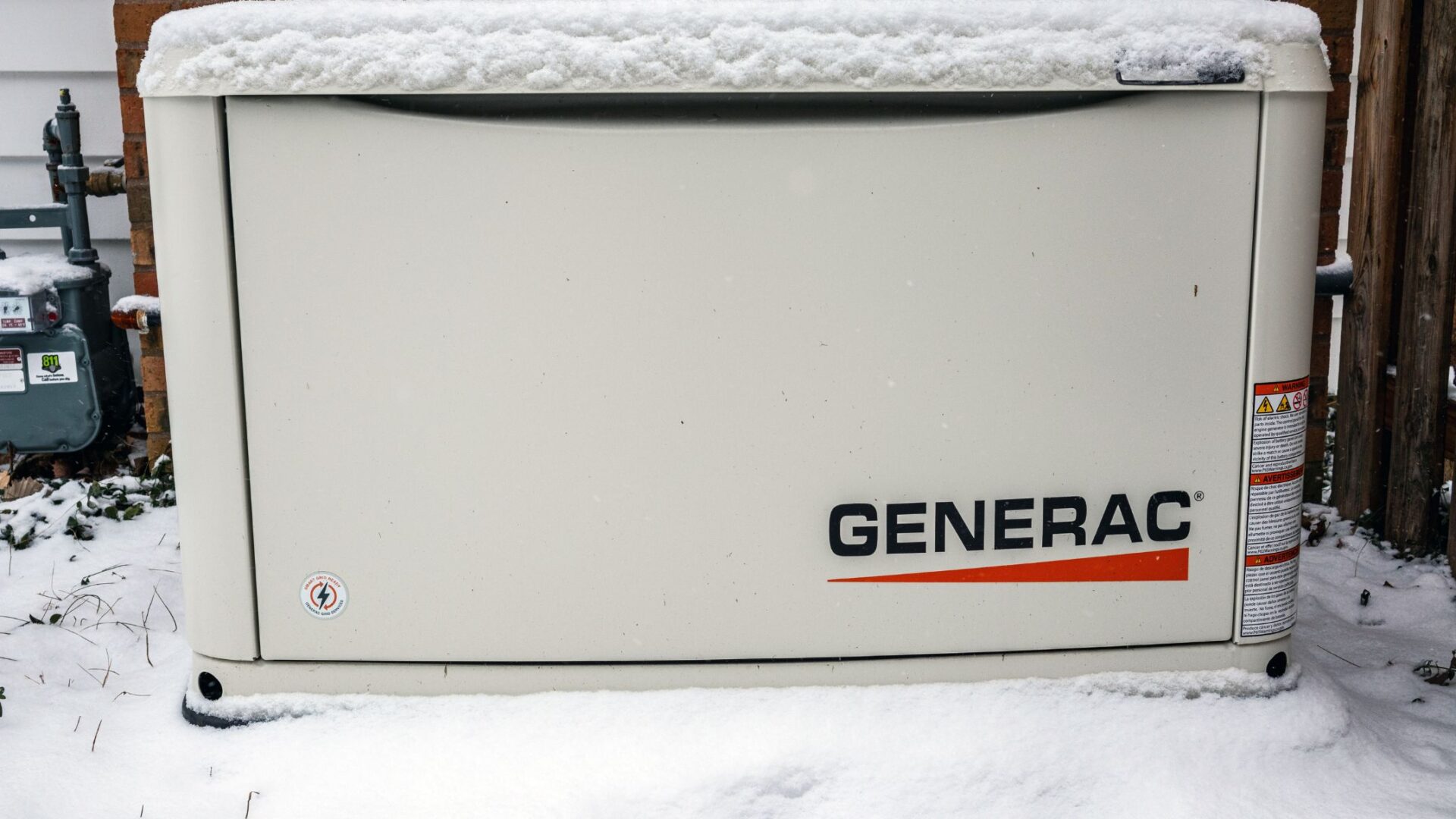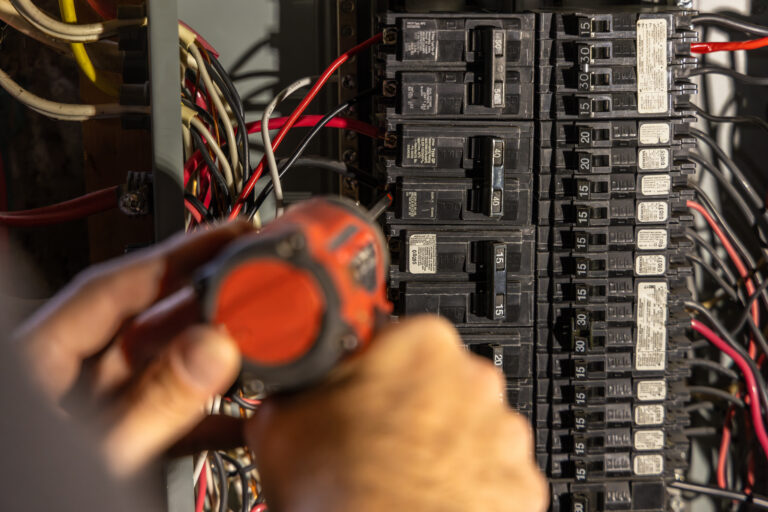
I want you to go back in time to 2013 for a second. Do you remember that ice storm that hit across Canada? You know, the one that caused over $200 million in damage, left 70,000 Torontonians without power, and made life a living nightmare for everyone. It was a harsh reminder of how unpredictable and devastating power outages can be and leave families in the cold, food spoiling in refrigerators, and entire neighborhoods in the dark for days.
The feeling of having your power go out in the blink of an eye can leave us with a pit in our stomachs. The lights go dark, the furnace or AC winds down, and next thing you know, you’re scrambling for flashlights, candles, and trying to keep your mind from racing a million miles a minute. But what if you didn’t have to worry? What if, within seconds of your power going out, it automatically switched to backup power and kept everything running smoothly – almost like nothing even happened. Your family is still comfortable because the furnace/AC is still running, your lights and TV are on, and your fridge and wifi are still working.
That’s exactly what a Generac standby home generator offers. Seamless, automatic backup power when you need it most. But is it really worth the investment? In this blog we’ll be breaking down the benefits, costs, and key factors to help you decide if a Generac generator is the right solution for your home.
Why Invest in a Standby Generator?
Power outages are more than just an inconvenience for you and your family, they can be costly and even dangerous. Here’s why installing a home standby generator is a smart decision:
- Uninterrupted Power – Standby generators automatically kick in within seconds of a power outage with the help of Automatic Transfer Switch (ATS), keeping your essential appliances running.
- Home Safety & Security – If you have a security system it relys on electricity. A generator ensures your cameras, alarms, and smart locks stay operational.
- Food & Medicine Preservation – A prolonged outage can lead to food spoilage, and if you rely on refrigerated medications, losing power isn’t an option for you.
- Comfortable Climate Control – Whether it’s winter heating or summer cooling, a standby generator keeps your HVAC system running, preventing extreme temperatures inside your home from making you or your family uncomfortable.
- Work-from-Home Reliability – If you work remotely, an outage means lost productivity. A generator keeps your devices powered and your internet running 24/7.
So How Does a Home Standby Generator Work?
Unlike portable generators that require manual setup and frequent fuel refills, standby generators offer a hassle-free, fully automated solution for backup power.
These generators are permanently installed on a levelled pad and directly wired into your home’s electrical system, ensuring a seamless transition when the power goes out. At the heart of this system is the Automatic Transfer Switch (ATS), which constantly monitors your home’s electricity. The moment an outage is detected – WHAM! The ATS signals the generator to start, and within seconds, it powers up to keep your home running smoothly.
Unlike gas-powered portable options that require manual refueling, most standby generators run on natural gas or liquid propane, eliminating the need to store fuel or constantly refill your tanks. Once utility power is restored, the ATS automatically switches your home back to the grid and shuts the generator down. This entire process happens without any manual intervention, meaning you don’t need to be home or lift a finger. Your standby generator takes care of everything, ensuring reliable, uninterrupted power when you need it most.
Choosing the Right Standby Generator for Your Home.
Not all generators are created equal. The right choice depends on your power needs, budget, and home setup. Here’s what you need to consider:
1. Determine Your Power Needs
You ultimately need to ask yourself: “Do I want to power to my entire home, or just the essentials?”
- Essential Circuits Only (10-20kW Generators) – This will allow you to connect refrigerators, sump pumps, lights, and internet. Ideal for small to mid-sized homes.
- Whole-Home Coverage (22-48kW Generators) – Powers everything, including HVAC systems, electric stoves, and washers/dryers. Best for larger homes or those in areas with frequent outages.
2. Pick Your Fuel Type
Most standby generators run on either:
- Natural Gas: Convenient and unlimited if your home has a gas line.
- Liquid Propane (LP): Requires a storage tank, but is an excellent option for homes without natural gas.
3. Brand & Reliability
Brands like Generac, Kohler, and Briggs & Stratton are industry leaders. They offer durable, high-quality generators with warranties and strong customer support.
The Standby Generator Installation Process
Once you’ve chosen your generator, what’s next? Installation is a multi-step process and with the help of professional, qualified electricians from Toro Electric, the process is seamless, easy, and smooth.
Here’s how it works:
Step 1: Home Inspection & Load Assessment
An electrician will evaluate your power needs and determine the best placement for the generator and transfer switch.
Step 2: Permits & Approvals
Generator installations typically require permits to ensure compliance with local safety and electrical codes. Your electrician will handle the necessary paperwork, including contacting the Electrical Safety Authority (ESA) to obtain the required approvals.
Step 3: Site Preparation & Generator Placement
The installation team will prepare a solid base (often a concrete pad) and position the generator in a safe, well-ventilated area, following local zoning and safety codes.
Step 4: Electrical & Fuel Connections
- The Automatic Transfer Switch (ATS) is installed and connected to your main electrical panel.
- The generator is hooked up to natural gas or a propane tank to ensure a continuous fuel supply.
Step 5: Testing & Final Approval
After installation, the system undergoes rigorous testing to ensure it activates instantly when needed. Your electrician will walk you through how everything works and answer any questions.
The entire process typically takes 1-2 days once all permits and approvals are secured.
Costs For a Generator Installation.
The cost of a home standby generator varies depending on size, fuel type, and installation complexity. Here’s a general breakdown:
Generator Unit:
- Small (10-20kW) – $3,000 to $6,000
- Medium (22-36kW) – $6,000 to $10,000+
- Large (48kW and above) – $10,000- $25, 000+/-
Installation Costs:
- Professional installation can range from $3,000 to $7,000, depending on the complexity.
- Additional costs may include permits, fuel line connections, and electrical upgrades to existing infastructure.
Expect to spend between $7,000 and $15,000 for a professionally installed standby generator.
Now, while it’s a significant upfront cost, a generator adds home value, reduces insurance premiums, and prevents financial losses from spoiled food, property damage, or business disruptions.
So make power outages a thing of the past and secure your home today. Reach out to the Toro team and request a free quote to find the perfect generator for your home.
So Should You Get a Standby Generator?
If you live in an area with frequent outages, want to be prepared for extreme weather events, o anyone in your family rely on electricity for critical needs, a standby generator is a wise investment. It’s not just about convenience, it’s about security, comfort, and peace of mind.
At Toro Electric, we specialize in professional Backup generator installations with top-quality service and expert support. Our team ensures a hassle-free experience, so your home stays powered no matter what.
If you’re ready to safeguard your home contact us today for all your power needs, we’ll make sure you and your family are taken care of.


